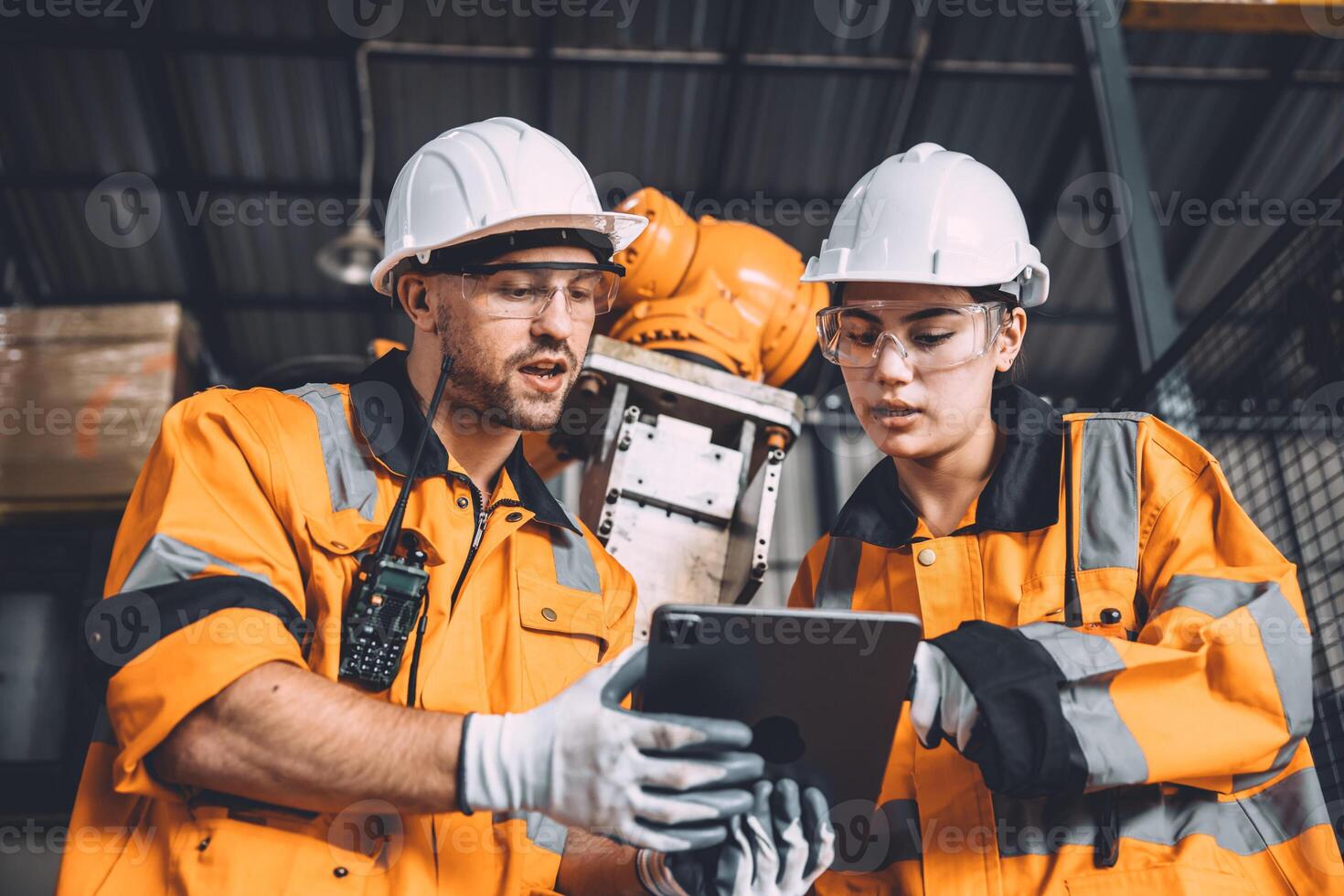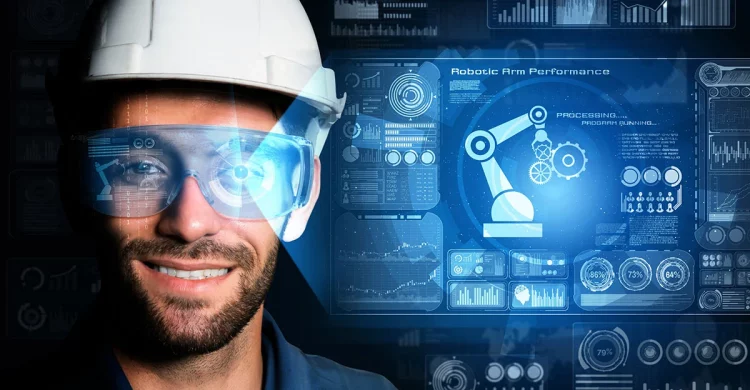Introduction: The Brave New World of Industry 4.0
The Fourth Industrial Revolution, often referred to as Industry 4.0, is fundamentally reshaping how businesses operate and how workers interact with technology. It introduces an era where cyber-physical systems, the Internet of Things (IoT), artificial intelligence (AI), and automation converge to enhance efficiency, productivity, and safety. But while this revolution promises unprecedented advancements, it also raises critical questions regarding its impact on workers, particularly on safety.
Can the integration of these technologies improve worker safety, or do they pose an even greater threat? The answer is not black and white, but instead lies in a nuanced exploration of both the opportunities and risks that Industry 4.0 brings to the workforce.
In this article, we will explore how Industry 4.0 technologies can enhance safety and protect workers, the potential risks they introduce, and how businesses can strike a balance between innovation and safeguarding their employees.
What Is Industry 4.0?
Before diving into the impact on worker safety, it’s essential to understand the components of Industry 4.0. Unlike previous industrial revolutions that focused on mechanization, electrification, or automation, Industry 4.0 emphasizes the fusion of digital technologies with physical systems. These technologies include:
- IoT (Internet of Things): Devices and machines connected to the internet, sharing real-time data.
- AI and Machine Learning: Systems that can learn, adapt, and predict actions based on data.
- Big Data Analytics: The ability to process and analyze massive amounts of data for decision-making.
- Automation and Robotics: Machines and robots that handle repetitive or hazardous tasks.
- Augmented Reality (AR) and Virtual Reality (VR): Technologies that enhance training and provide real-time assistance.
These technologies enable businesses to optimize processes, reduce costs, and improve safety through real-time monitoring and data-driven decisions.

How Industry 4.0 Can Improve Worker Safety
1. Predictive Maintenance: Preventing Accidents Before They Happen
One of the most powerful ways Industry 4.0 can enhance safety is through predictive maintenance. By using sensors and IoT devices to monitor equipment performance, businesses can detect potential failures before they occur. This predictive capability allows for maintenance to be carried out proactively rather than reactively, reducing the likelihood of machinery breakdowns during operation.
For example, in manufacturing environments, machinery failures can be dangerous, leading to accidents that harm workers. By predicting when a machine is likely to fail, companies can perform necessary repairs or replacements in advance, preventing accidents and ensuring a safer work environment.
2. Robotics: Reducing Worker Exposure to Hazardous Tasks
In environments like construction, mining, and manufacturing, workers are often exposed to dangerous tasks such as lifting heavy objects, working with toxic chemicals, or operating machinery in hazardous conditions. With the rise of collaborative robots (cobots) and autonomous robots, many of these tasks can be offloaded to machines, reducing human exposure to danger.
For instance, robots equipped with sensors and AI can carry out inspections in unsafe or hard-to-reach areas, or handle hazardous materials, thus minimizing the risks faced by workers. Moreover, the use of exoskeletons—wearable robots that assist with lifting heavy loads—can help reduce physical strain, preventing injuries like musculoskeletal disorders.
3. Real-Time Monitoring and Wearables: Tracking Health and Safety
Another innovation that contributes to worker safety is the integration of wearable technologies that track vital signs and environmental factors. Workers in high-risk industries can wear devices that monitor heart rate, body temperature, posture, and even exposure to hazardous chemicals or gases.
If a worker’s vital signs indicate potential distress, the system can alert supervisors, allowing for quick intervention. This real-time monitoring also extends to the workplace environment, where sensors can detect unsafe levels of toxins, air quality issues, or extreme temperatures, providing workers with early warnings to mitigate potential health hazards.
4. Virtual Reality Training: Safe Practice Without the Risk
Training is a critical component of worker safety. However, traditional training methods, especially in high-risk industries, can be dangerous or insufficient. Virtual Reality (VR) allows workers to practice operating machinery, handling hazardous materials, or responding to emergency situations without putting themselves at risk.
In scenarios like fire drills, emergency evacuations, or hazardous material handling, VR can simulate realistic situations where workers can practice their responses in a safe, controlled environment. This type of immersive training not only boosts safety but also improves retention and prepares workers for real-world scenarios in a way that traditional methods cannot.
Potential Threats to Worker Safety from Industry 4.0
While Industry 4.0 holds enormous potential to improve safety, it also introduces certain risks and challenges. These risks often stem from the very technologies designed to make workplaces safer.
1. Increased Reliance on Automation: Human Error and Job Displacement
One of the most significant risks associated with Industry 4.0 is the potential displacement of workers by automation. As robots and AI systems become more advanced, tasks once performed by humans are increasingly being taken over by machines. While automation reduces the likelihood of accidents caused by human error, it also introduces new challenges.
In some cases, workers may no longer be trained to operate critical machinery or respond to emergencies in environments where robots have taken over. This skills gap can pose a serious threat to safety, particularly if a system fails or encounters an unexpected situation that requires human intervention.
Moreover, the rise of automation could lead to job displacement, leaving workers in certain industries without the necessary skills to transition to other roles. This loss of livelihood can exacerbate social inequalities and create further stress for displaced workers, potentially affecting their well-being.
2. Cybersecurity Risks: The Threat of Hacking and System Failures
As factories, warehouses, and offices become more connected through IoT devices and digital systems, they also become more vulnerable to cyberattacks. If malicious actors gain access to critical systems, they could cause serious disruptions to operations, including compromising safety measures.
For example, an attacker could manipulate safety protocols or disable sensors that monitor dangerous conditions. In a worst-case scenario, a cyberattack could cause industrial accidents, endangering both workers and the public. The interconnectedness of Industry 4.0 systems means that a breach in one area could have cascading effects on safety and operational integrity.
3. Data Overload: Decision Fatigue and System Mismanagement
While data is a cornerstone of Industry 4.0, there is such a thing as data overload. The sheer volume of information generated by IoT devices, sensors, and machines can overwhelm operators and decision-makers. If safety systems are constantly bombarded with data that isn’t properly analyzed or prioritized, there is a risk that important alerts may be missed.
This overload can also lead to decision fatigue, where operators or supervisors become desensitized to alerts or warnings, potentially overlooking a critical safety issue. Ensuring that data is used effectively and that safety systems are properly managed is essential for preventing accidents.
4. Human-Machine Interaction: New Forms of Risk
As robots and AI systems increasingly interact with human workers, new risks emerge. Miscommunication or misunderstandings between humans and machines could lead to accidents. For example, a worker might not understand the behavior of a collaborative robot, leading to a potential collision or injury. Ensuring smooth and intuitive interaction between humans and machines is crucial to minimizing these risks.

Balancing Innovation with Worker Safety
To harness the benefits of Industry 4.0 while mitigating its risks, companies must strike a balance between innovation and safety. Here are some strategies that businesses can implement to create safer environments:
1. Focus on Worker Retraining and Upskilling
As automation and AI change the nature of work, retraining and upskilling programs are vital to ensuring workers can adapt to new roles. By investing in continuous learning, companies can ensure that workers are not only safe but also have the skills to thrive in the Industry 4.0 ecosystem.
2. Robust Cybersecurity Measures
Investing in cybersecurity is essential to protect both physical and digital assets. Companies must implement robust security protocols, including regular system updates, encryption, and multi-factor authentication, to protect their networks from cyberattacks.
3. User-Friendly Human-Machine Interfaces
To reduce the risk of accidents, machines must be designed with the user in mind. Clear, intuitive interfaces that allow workers to understand the behavior and intentions of robots and AI systems will reduce misunderstandings and improve safety.
4. Integration of Safety Protocols with AI and Automation
AI and automation systems should be integrated with safety protocols to ensure that workers are automatically alerted to any potential hazards. For example, AI systems can identify patterns that may indicate unsafe behavior or conditions and immediately notify supervisors to take action.
Conclusion: Industry 4.0 – A Double-Edged Sword for Worker Safety
In conclusion, Industry 4.0 offers remarkable potential to improve worker safety through predictive maintenance, robotics, wearables, and immersive training. These technologies can reduce human error, enhance training, and mitigate risks in hazardous environments. However, the rise of automation and the increasing reliance on interconnected systems also pose significant challenges, including job displacement, cybersecurity risks, and human-machine interaction issues.
The key to maximizing safety while minimizing threats lies in careful implementation. Companies must prioritize continuous training, robust cybersecurity, intuitive machine interfaces, and the integration of safety protocols to ensure that the benefits of Industry 4.0 outweigh the potential risks.
As we move deeper into the Fourth Industrial Revolution, it is essential that businesses, workers, and policymakers collaborate to create environments where safety is always a priority, even in the face of rapid technological change.











































